Exploring the vibrant history and complex legacy of Soweto is a captivating experience that provides deep insights into South Africa’s long struggle against apartheid. This comprehensive tour delves into the lives of iconic figures, the resilient community spirit, and the critical institutions that have shaped the region. From the former homes of Nelson Mandela and Desmond Tutu to the immersive shanty town experience, visitors gain a profound understanding of the challenges faced during this pivotal era. But the journey doesn’t end there – the Apartheid Museum offers a sobering, yet profoundly impactful conclusion to this powerful exploration.
Key Points
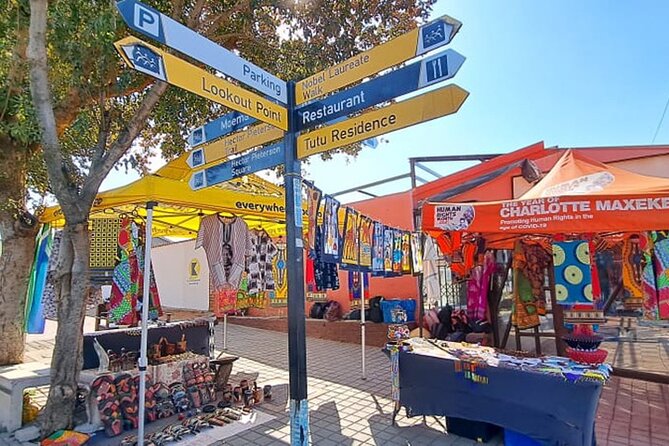
- Explore the vibrant Soweto township, including the former homes of Nelson Mandela and Archbishop Desmond Tutu on Vilakazi Street.
- Gain a deeper understanding of the challenges and resilience of the Soweto community during the apartheid era.
- Visit iconic landmarks like Constitution Hill, Telkom Tower, and the top of the Carlton Centre to uncover Johannesburg’s complex past and ongoing transformation.
- Enjoy the shanty town of Soweto to witness the daily lives and struggles of the residents, while appreciating their rich culture and unbreakable spirit.
- Conclude the experience with a comprehensive and immersive exploration of South Africa’s apartheid era at the Apartheid Museum.
Soweto Township Exploration
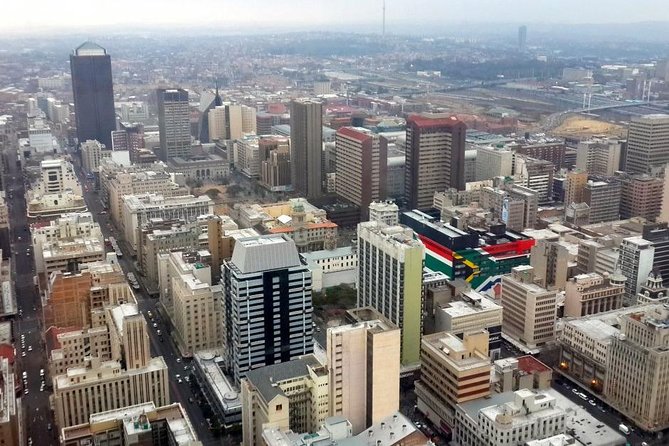
The tour begins with a visit to the vibrant and historic Soweto township, where visitors can explore the former homes of renowned anti-apartheid leaders Nelson Mandela and Archbishop Desmond Tutu on the famous Vilakazi Street.
Travelers will also get a glimpse of the shanty town and have the opportunity to interact with the locals.
The tour passes by the Soweto Campus of the University of Johannesburg and the massive Chris Hani Baragwanath Hospital, the third-largest hospital in the world.
This immersive experience allows visitors to gain a deeper understanding of the challenges and resilience of the Soweto community during the apartheid era.
Ready for more culture? More museums we feature in Johannesburg
Landmarks and Historic Sites
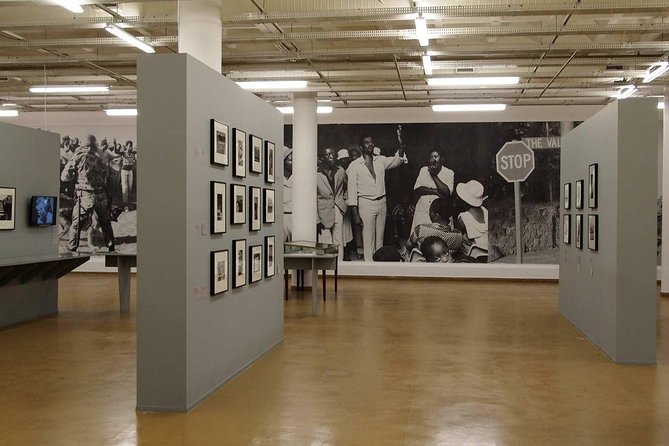
After exploring the vibrant Soweto township, the tour moves on to visit several key landmarks and historic sites throughout Johannesburg.
Travelers will head to Constitution Hill, where they’ll learn about the imprisonment of renowned figures like Nelson Mandela and Mahatma Gandhi.
From there, they’ll see the iconic Telkom Tower, Nelson Mandela Bridge, and Newtown Jazz Walk of Fame, each offering a unique glimpse into the city’s rich history and cultural heritage.
The tour also includes a visit to the top of the Carlton Centre, Africa’s tallest building, providing breathtaking views of the city skyline.
These landmarks and historic sites offer a comprehensive understanding of Johannesburg’s complex past and its ongoing transformation.
Vilakazi Street Highlights
Visitors on the Johannesburg Soweto Apartheid Museum Experience tour explore the iconic Vilakazi Street, home to the former residences of two renowned anti-apartheid leaders – Nelson Mandela and Archbishop Desmond Tutu.
This vibrant street offers a glimpse into the turbulent history of Soweto and the struggle against apartheid. Guests visit Mandela’s modest home, now a museum dedicated to his legacy. They also stop at Tutu’s home, where the Nobel Peace Prize laureate lived and worked.
Along the way, travelers soak up the lively atmosphere, interact with locals, and gain a deeper understanding of Soweto’s pivotal role in the anti-apartheid movement. Vilakazi Street stands as a poignant reminder of the sacrifices and triumphs that paved the way for a democratic South Africa.
Shanty Town Immersion
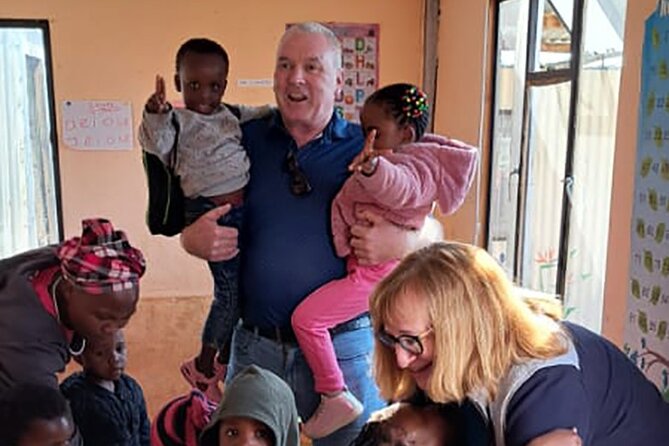
Ultimate Johannesburg Soweto Experience With Apartheid Museum
Shanty Town Immersion
Beyond the storied landmarks of Vilakazi Street, the Johannesburg Soweto Apartheid Museum Experience also immerses guests in the gritty realities of Soweto’s shanty towns, offering a firsthand glimpse into the housing challenges and resilient communities that emerged under the weight of apartheid.
Visitors will meander through tightly-packed corrugated metal shacks and modest brick homes, learning how residents overcame severe resource scarcities to build vibrant neighborhoods. The tour highlights the daily lives and struggles of Soweto’s residents, underscoring the township’s rich culture and unbreakable spirit in the face of profound adversity.
This eye-opening encounter provides a deeper, more nuanced understanding of the complex realities that shaped South Africa’s revolutionary history.
Johannesburg University and Hospital
The Soweto Experience tour also features stops at the Soweto Campus of the University of Johannesburg and the renowned Chris Hani Baragwanath Hospital, providing insights into the educational and medical institutions that have played pivotal roles in the township’s development.
The university campus showcases the commitment to higher education and empowerment within the community, with students hailing from diverse backgrounds. Visitors can gain an understanding of the challenges and achievements of this institution.
Nearby, the Chris Hani Baragwanath Hospital stands as the third-largest hospital in the world, serving the healthcare needs of Soweto’s residents. This stop highlights the resilience and resourcefulness of the community, as the hospital continues to provide essential medical services despite the constraints of the past.
Constitution Hill and Imprisoned Icons
Constitution Hill stands as a poignant reminder of South Africa’s turbulent past, where some of the nation’s most renowned figures, including Nelson Mandela and Mahatma Gandhi, were once imprisoned for their roles in the struggle against apartheid.
This historic site now houses the country’s Constitutional Court, symbolizing the triumph of democracy over oppression. Visitors can explore the old prison cells and learn about the experiences of the incarcerated activists who fought tirelessly for justice and human rights.
The tour also includes a stop at the Number Four prison, where political prisoners were once held in inhumane conditions. This powerful experience offers a profound insight into the country’s complex history and the sacrifices made to achieve freedom.
Johannesburg’s Iconic Structures
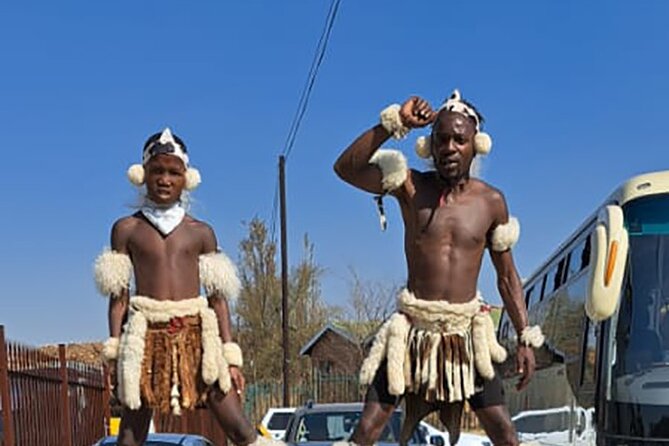
Amidst the bustling cityscape of Johannesburg, iconic structures stand as beacons of the city’s rich history and architectural prowess. From the towering Carlton Centre to the striking Nelson Mandela Bridge, these landmarks captivate visitors with their striking designs and significant roles in the city’s development.
| Structure | Height | Significance |
|---|---|---|
| Carlton Centre | 223 meters | Africa’s tallest building with an observation deck offering panoramic views of the city |
| Telkom Tower | 269 meters | Iconic telecommunications tower providing views of Johannesburg’s skyline |
| Nelson Mandela Bridge | 284 meters | Landmark bridge named after the iconic anti-apartheid activist, connecting the CBD to Newtown |
These architectural marvels not only impress with their sheer scale but also serve as testaments to Johannesburg’s resilience and progress.
Apartheid Museum Experience
Beyond the impressive landmarks that dot Johannesburg’s skyline, the Apartheid Museum stands as a poignant reminder of the city’s tumultuous past.
Offering a comprehensive and immersive exploration of South Africa’s apartheid era, the museum guides visitors through the dark chapter of racial segregation and the long fight for freedom.
Visitors will learn about the 1976 Soweto Uprising and the tragic death of 12-year-old Hector Pieterson, a pivotal moment in the anti-apartheid movement.
Through multimedia exhibits, historical artifacts, and powerful testimonies, the museum provides a sobering yet profound experience, leaving an indelible impression and a deeper understanding of the struggle for equality and justice in South Africa.
Frequently Asked Questions
Are There Any Age Restrictions for the Tour?
The tour doesn’t have any age restrictions. Children of all ages are welcome to participate. However, the content may not be suitable for very young children, and parental discretion is advised.
Can I Bring My Own Food and Drinks on the Tour?
Guests are generally allowed to bring their own food and drinks on the tour. However, it’s recommended to check with the tour operator beforehand as some may have restrictions or suggest purchasing refreshments from local vendors along the way.
What Is the Cancellation Policy for the Tour?
The tour operator typically offers a flexible cancellation policy, allowing customers to cancel or modify their booking up to 24 hours in advance without penalty. Specific details may vary, so it’s best to check the tour’s terms and conditions.
Is There an Option to Customize the Tour Itinerary?
The tour generally follows a set itinerary, but the provider may be able to accommodate customization requests. Customers should inquire about flexibility when booking to see if adjustments to the tour can be made based on their interests and needs.
Are Discounts Available for Students or Seniors?
Yes, discounts may be available for students and seniors. Customers should inquire about any special pricing when booking the tour. Discounts are often offered but the specifics can vary, so it’s best to check with the tour provider directly.
Recap
The ‘Ultimate Johannesburg Soweto Experience With Apartheid Museum‘ provides a comprehensive understanding of Soweto’s turbulent history and the fight against apartheid.
Visitors can explore iconic landmarks, enjoy the community, and gain profound insights into South Africa’s struggle for equality at the Apartheid Museum.
This thought-provoking experience offers a powerful and eye-opening glimpse into the country’s past, fostering a deeper appreciation for its resilience and progress.
More Museum Experiences in Johannesburg
More Tour Reviews in Johannesburg
Not for you? Here's more things to do in Johannesburg we have recnetly reviewed
- 12 Best 2 Day Tours In Johannesburg
- 20 Best 3 Day Tours In Johannesburg
- 20 Best 4 Day Tours In Johannesburg
- 7 Best Dining Experiences In Johannesburg
- 20 Best Full-Day Tours In Johannesburg
- 7 Best Dinner Tours In Johannesburg
- 22 Best Lunch Experiences In Johannesburg
- 7 Best Food Tours In Johannesburg
- Hassle-Free Airport Shuttle: OR Tambo to Sandton Morningside
- Johannesburg (Sunset & Dinning & Rooftop) Hopping Experience
- Drakensberg Mountains. Tugela Gorge and Amphitheater Hike
- Overnight Hike Sentinal Peak and Tugela Falls
